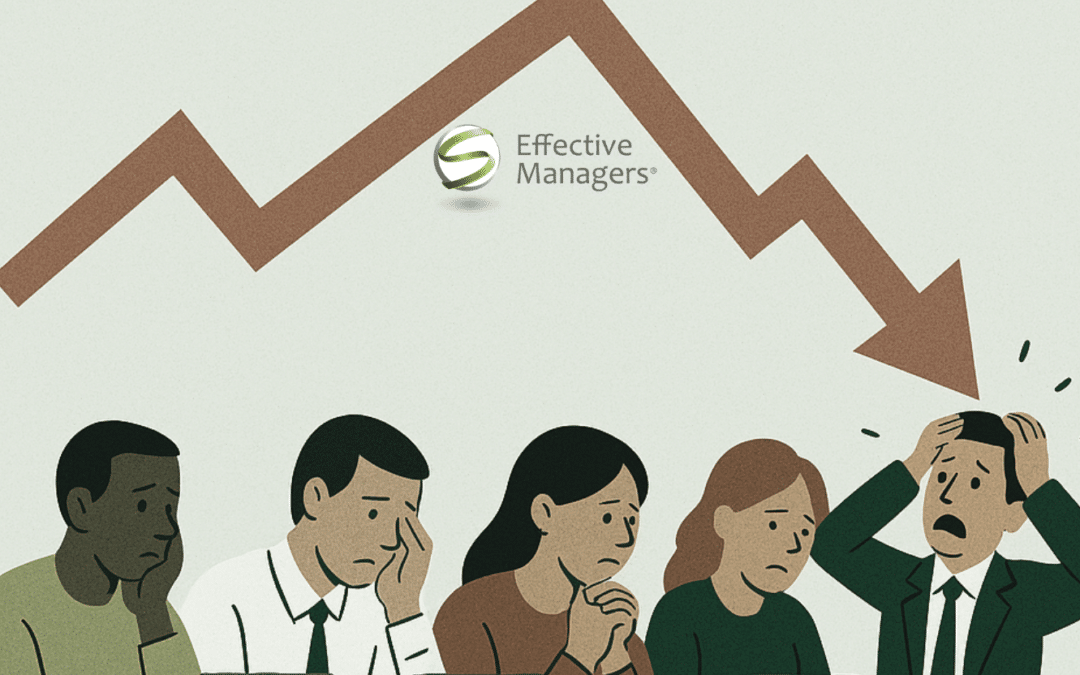A recent Forbes article reports a sobering reality: employee engagement in the U.S. has dropped to its lowest level in a decade, with only 31% of employees feeling engaged in their work. Gallup’s data paints a clear picture of a workforce that is increasingly checked out, and it’s easy to point fingers—at the return-to-office mandates, at younger generations, or at economic uncertainty.
But let’s be honest.
This isn’t an employee problem.
It’s a management problem. More precisely, it’s a systemic that sets managers up to fail—and employees are paying the price with frustration and disengagement.
The Middle Management Squeeze
Middle managers are the linchpin of organizational performance, yet they are often under-supported, overextended, and caught between competing priorities. The Gallup report highlights exactly what I’ve seen in organizations of all sizes:
- Unclear expectations
- Lack of accountability
- Insufficient support from senior leaders
- Conflicting roles across teams
Sound familiar?
These aren’t personal failings of individual managers. They’re symptoms of poor organizational design. If managers don’t have the authority to make decisions, the clarity to understand what’s expected, or the structure to support their teams, disengagement is inevitable—no matter how many team-building events you run.
Engagement Starts with Accountability
Through my work with leaders and organizations, I’ve consistently seen that clarity of accountability and authority is the starting point for engagement.
Employees want to know:
- What exactly am I accountable for?
- Who decides what?
- How does my work contribute to our goals?
And managers need to be positioned to answer those questions—not just manage tasks and firefight. This is where the Effective Point of Accountability® becomes essential. When organizations define roles with the right level of work, provide clear decision-making authority, and align managerial accountability, engagement begins to rise—because people feel ownership, not just obligation.
What’s the Fix? It’s Not Perks. It’s Structure.
Forget pizza lunches and ping-pong tables. The root causes of disengagement are embedded in how work is structured and led. To turn this around, leaders must:
- Design roles with the right time-span of discretion
- Clarify accountability and cross-functional authority
- Support middle managers with real empowerment—not just performance pressure
- Build trust by doing what they say and saying what they do
When you fix the system, you give managers the tools to lead—and employees the clarity to engage.
Get the Support You Deserve
If you’re seeing signs of disengagement in your own organization—or just feeling the pressure of trying to scale with stretched managers and unclear accountability—you’re not alone. These are complex, systemic issues that no leader should tackle in isolation.
That’s why I work with TEC Canada, where CEOs and senior executives gain the clarity and support they need through confidential peer groups and 1-to-1 coaching. The right insights, the right questions, and the right environment make all the difference.
👉 Learn more about TEC Canada and all the options for peer groups. Whether you’re the head of the organization, a key executive, or an advancing leader, there’s a group for you.
📩 Click here for information about my Ottawa-based TEC groups to explore how a peer advisory group can help you break through systemic barriers—and start building an organization where managers are empowered, not exhausted.






